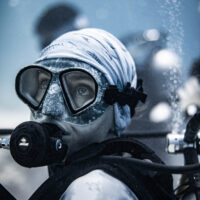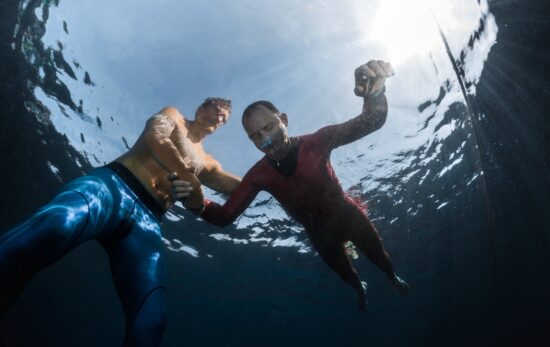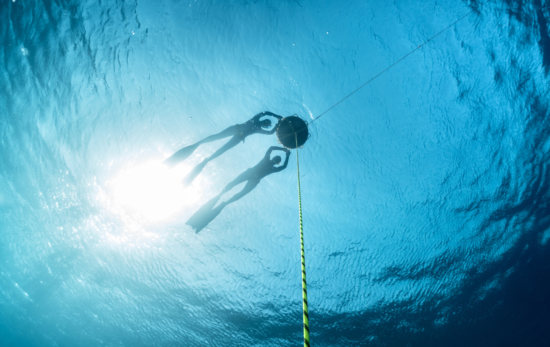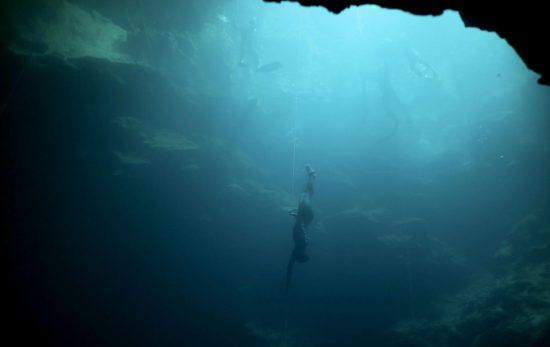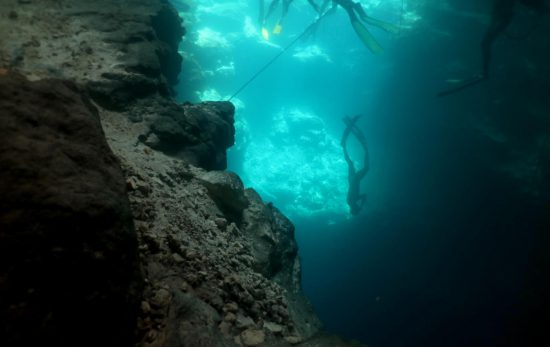Dynamic apnea training is a type of training used by freedivers to improve their breath-hold abilities while swimming horizontally. This is different from static apnea training, which is done while floating on the surface of the water.
In dynamic apnea training, the diver swims a set distance, such as 25 meters (82 feet) or 50 meters (164 feet), while holding their breath. The goal is to swim as far as possible while maintaining good technique and body position, and to increase the distance over time.
Dynamic apnea training can be done in a pool or confined water, and can be done either with fins, monofin or bi-fins, as a no-fins technique . The training usually starts with shorter distances and gradually increases as the diver becomes more comfortable and confident.
This type of training is helpful in developing the muscle endurance and strength needed for longer and deeper dives, as well as to improve the body’s efficiency in using oxygen.
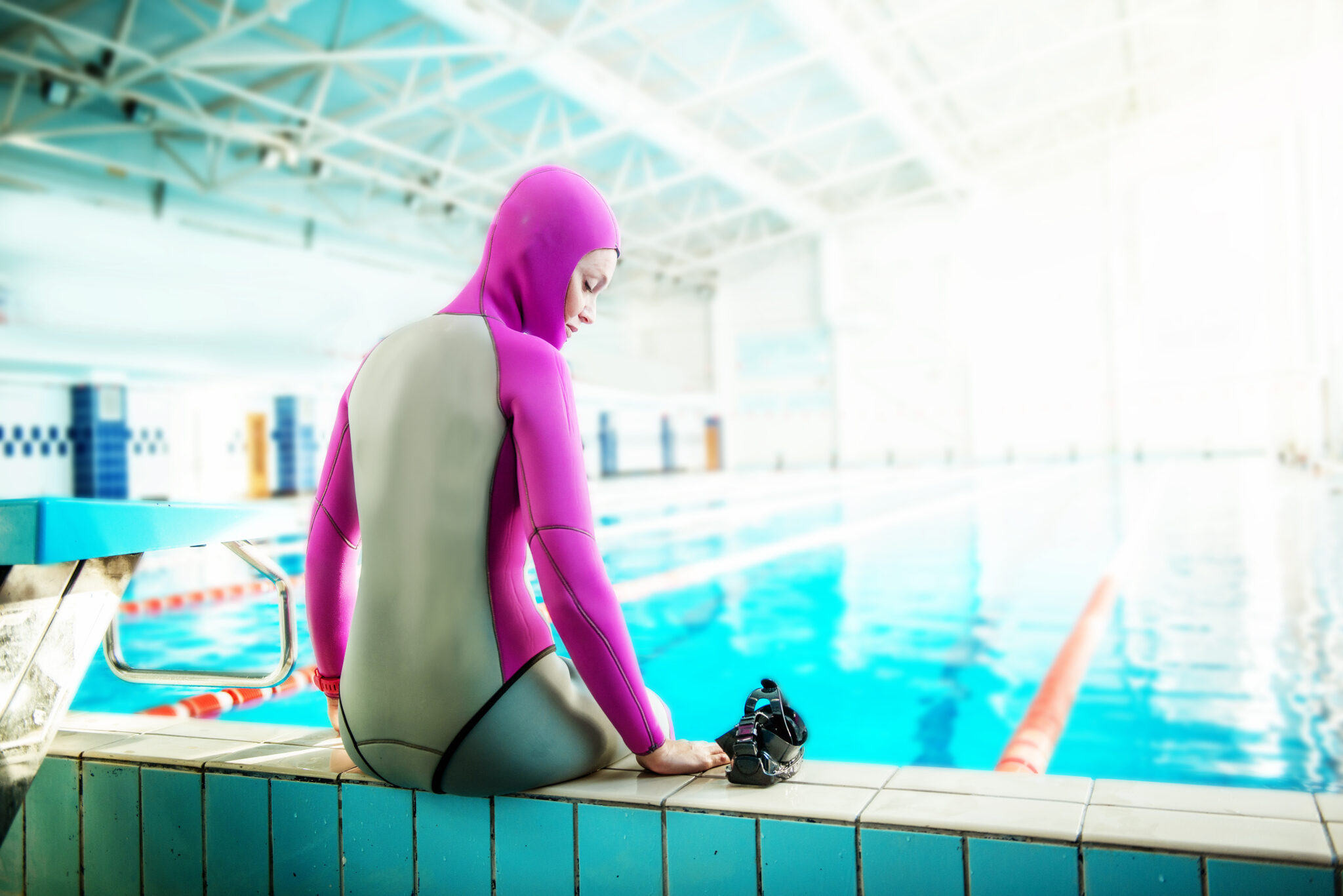
Dynamic Apnea Training Tips
Here are some tips for practicing and improving dynamic apnea training in freediving:
- Start with shorter distances and gradually increase the distance as you become more comfortable and confident.
- Practice dynamic apnea in a pool or confined water and concentrate on your technique and streamlining whether using a monofin, bi-fins or no fins to increase the speed and efficiency of your swim.
- Practice proper breathing techniques, such as slow, relaxed breathing before and during the swim to conserve oxygen.
- Always perform recovery breaths immediately after surfacing.
- Try to maintain good technique and body position while swimming to reduce drag and improve efficiency.
- Use a trained buddy or instructor to monitor your progress and to provide support.
- Practice regularly, and try to increase the distance of your swims gradually over time.
- Incorporate relaxation and mindfulness techniques into your dynamic apnea training to help you stay calm and focused.
- Always follow safety protocols and never push yourself beyond your limits.
- Take breaks and rest between sets and never overdo it.
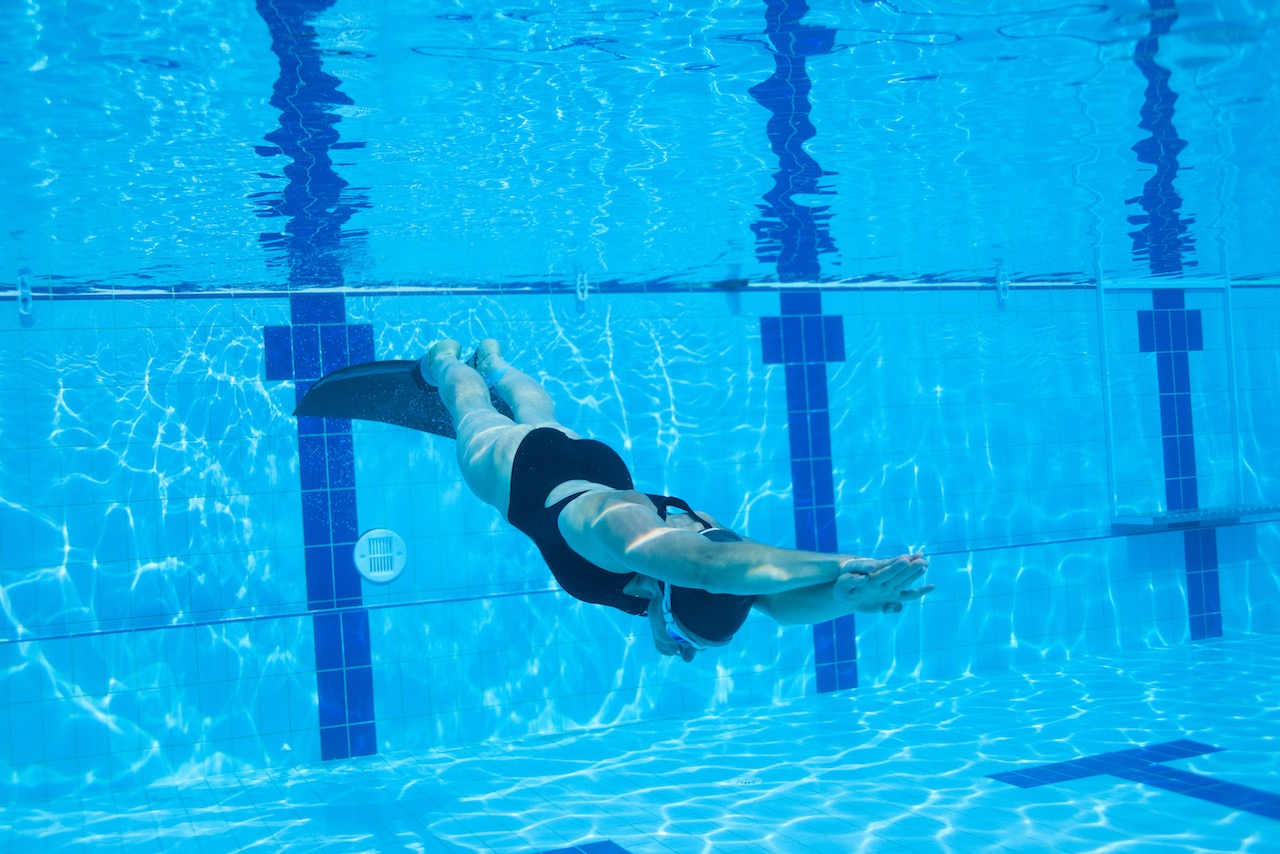
Potential Risks That Can Occur Without Proper Training
Freediving is a fun and exhilarating activity that allows individuals to explore the underwater world. Also, being a freediver allows you to connect with nature in a unique way. The feeling of weightlessness and the sense of freedom that comes with diving without the use of heavy equipment can be very enjoyable.
However, it is important to follow safety procedures while freediving, as it is a sport that carries some inherent risks. Freediving is a demanding activity that puts a lot of stress on the body and the mind, and it is essential that the divers are well-trained and properly equipped to handle these challenges.
One of the main risks in freediving is blackout, which is a loss of consciousness due to lack of oxygen. This can happen if a diver holds their breath for too long, or is not properly trained in how to manage their breath hold. This is just one of the several risks covered in the PADI Freediver course. It is important to follow safety procedures to minimize the risks and to make the diving experience as safe and enjoyable as possible.
Ready to dive in? Learn more about the PADI Freediver course and get started today!
